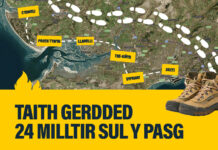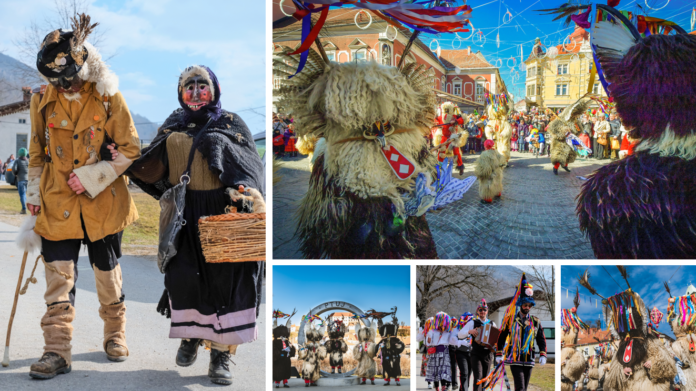
Shrovetide marks the transition from winter to spring, with traditions deeply rooted in Slovenian culture. Traditionally believed to span from Epiphany until Shrove Tuesday, the timing of Shrovetide changes each year, depending on the date of Easter. Though commonly associated with the arrival of spring, the name ‘pust’ in Slovenian, and the international term ‘carnival’, both stem from the phrase ‘leave meat’. This reflects the religious observance that culminates on Ash Wednesday, which signals the start of the 40-day period of Lent, a time of fasting before Easter. Shrove Tuesday is the height of the celebrations, and the revelry ends with the arrival of Ash Wednesday.
During this time, people dress in a range of masks, from traditional to those reflecting contemporary society. The essence of Shrovetide is captured in its lively festivals, featuring carnival parades, dances, and, of course, tables laden with the rich, hearty dishes that define the season. These vibrant customs represent Slovenia’s diverse Shrovetide heritage, with each region adding its own flavour to the celebrations.
Shrovetide customs, rooted in local tradition, were once primarily male-dominated, though today men, women, and children alike don costumes and venture through their villages to wish others a prosperous and bountiful year ahead. These processions are loud and boisterous, a way of warding off any ill omens from the previous year. In some regions, preparations for the festival begin as early as December, and celebrations officially commence on Candlemas (2nd February), lasting until Ash Wednesday.
The customs vary widely across the country, demonstrating both commonalities and regional differences. Despite these variations, the traditions remain vital, continuously evolving to adapt to modern times while preserving a strong sense of community and identity. The rich and diverse nature of Shrovetide customs highlights the deeply ingrained cultural heritage that continues to thrive.
One of the most iconic symbols of this period is the Kurent, a character clad in sheepskin with horns and bells, believed to bring good fortune and drive away evil spirits. In some areas, such as Cerkno, the Laufarji, wearing wooden masks, take centre stage, embodying various local characters and customs. Symbolic actions, like hauling a freshly cut log into the village or temporarily assuming roles of local authority, further emphasise the festive atmosphere and communal spirit.
The Shrovetide period, from Fat Thursday to Ash Wednesday, is filled with a variety of events, including parades, masked processions, and dances. The largest of these is the Kurentovanje in Ptuj, where participants dressed as Kurenti lead the carnival celebrations. Other notable events include the Borovo gostüvanje, a symbolic pine wedding, and the sawing of the hag in Cerknica, where locals enact traditional customs.
The festival is also a time for indulgence in distinctive, hearty foods, particularly those made with pork. Traditional dishes include pork soup, ričet (a barley hotpot with pork ribs), and a variety of sausages. One of the festival’s defining features is the abundance of sweet fried pastries, including krofi (doughnuts) and miške (fried doughnut balls), which are enjoyed by many during this period.
Shrovetide in Slovenia is a rich celebration that captures cultural traditions, community spirit, and delicious food, offering a fascinating glimpse into the country’s deep-rooted customs and a joyous welcome to spring.
Help keep news FREE for our readers
Supporting your local community newspaper/online news outlet is crucial now more than ever. If you believe in independent journalism, then consider making a valuable contribution by making a one-time or monthly donation. We operate in rural areas where providing unbiased news can be challenging. Read More About Supporting The West Wales Chronicle

























